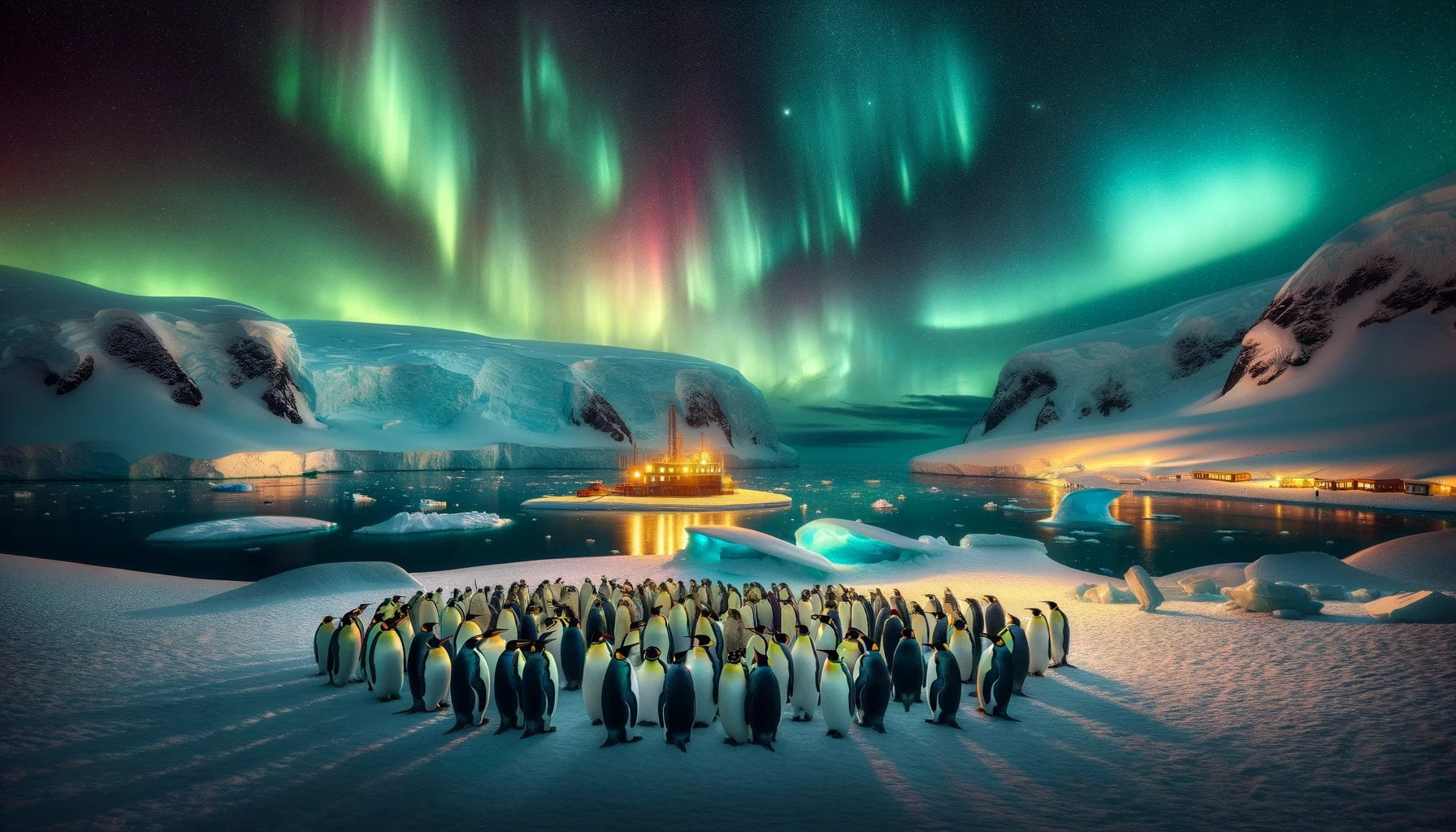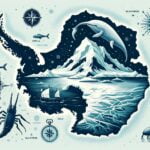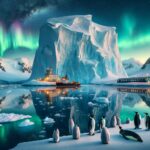Antarctica, the remote and mysterious icy continent, holds endless wonders waiting to be explored. As we venture into this captivating realm of pristine landscapes and extreme conditions, we uncover three intriguing facts about Antarctica that bewilder and captivate the imagination. From its unique ecosystem teeming with resilient life forms to its icy landscapes that hold clues to Earth’s ancient history, Antarctica has earned its place as one of the most enigmatic and awe-inspiring regions on our planet. Join us on this expedition as we delve into the hidden depths of Antarctica and unveil its captivating secrets.
Key Takeaways:
- Antarctica is the coldest, driest, highest, and windiest continent on Earth, with temperatures reaching as low as -89.2 degrees Celsius and winds exceeding 200 mph.
- Antarctica holds about 90% of the world’s ice and 70% of the world’s fresh water, expanding its size during winter due to the formation of sea ice.
- Antarctica has no capital city, official language, or country control, and it was first sighted by humans just 200 years ago.
- Antarctica is home to unique wildlife, including the blue whale, the largest mammal ever known, and the Adelie penguin, the fastest underwater penguin.
- Antarctica experiences two seasons instead of four, and some areas, such as the Dry Valleys, have minimal snow or ice.
What are 3 interesting facts about Antarctica?
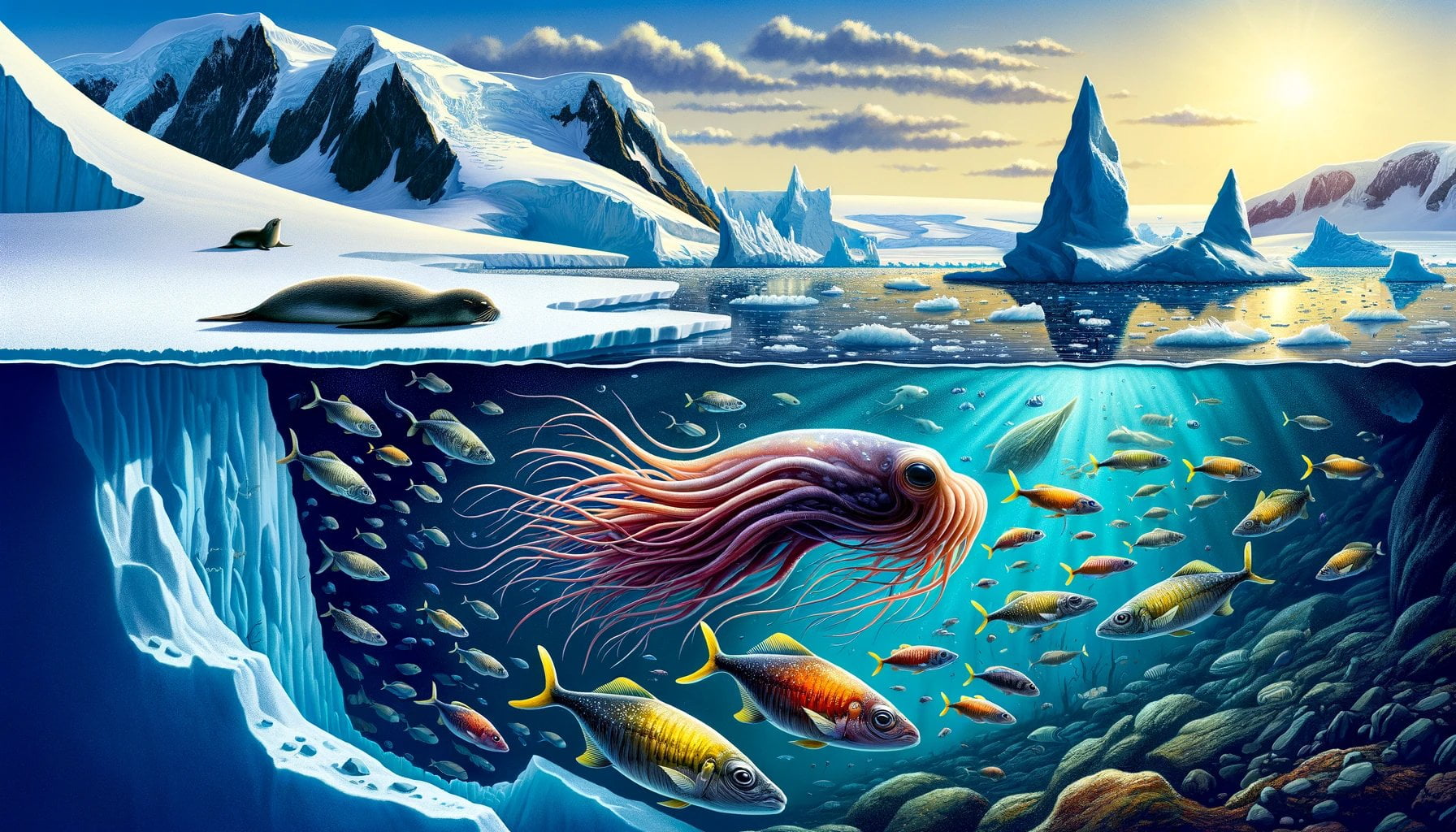
Antarctica, the isolated and enigmatic continent located at the southernmost part of the Earth, holds many captivating secrets waiting to be unveiled. Known for its extreme climate, unique wildlife, and awe-inspiring landscapes, Antarctica has long fascinated adventurers and scientists alike. In this article, we will explore three interesting facts about this mysterious icy continent.
Fact 1: The Frozen Kingdom of Superlatives
When it comes to superlatives, Antarctica claims numerous impressive titles. It is not only the coldest place on Earth but also the driest and highest continent. In fact, the lowest recorded temperature ever measured on our planet was a chilling -89.2 degrees Celsius (-128.6 degrees Fahrenheit) in Antarctica. Additionally, due to its extreme weather conditions, winds in some areas can reach incredible speeds of over 200 miles per hour.
Antarctica’s icy terrain also makes it the largest reservoir of ice on Earth, containing around 90% of the world’s ice and a staggering 70% of its fresh water. During winter, the continent doubles in size as the surrounding seawater freezes, forming expansive sea ice. This frozen kingdom plays a crucial role in regulating global climate patterns and sea levels.
Fact 2: A Land of Discoveries and No Borders
Despite its vast size and significance, Antarctica doesn’t have any official borders, a capital city, or a native population. It remains a territory dedicated to scientific exploration and international cooperation. Fascinatingly, humans first laid eyes on this icy continent just 200 years ago when the Russian expedition led by Fabian von Bellingshausen and the British expedition led by Edward Bransfield both sighted its distant shores in 1820.
Since then, numerous scientific expeditions and research stations have been established across Antarctica by various countries. These stations provide valuable insights into climate change, weather patterns, and ecosystem dynamics. The absence of human habitation and political boundaries gives Antarctica a sense of untouched wilderness and unparalleled beauty.
Fact 3: Rich Biodiversity in the Harshest Conditions
Contrary to popular belief, Antarctica is not a barren ice desert devoid of life. It harbors a diverse range of wildlife specially adapted to survive in its extreme conditions. One of the most awe-inspiring creatures that calls Antarctica home is the blue whale, the largest mammal to have ever existed on Earth. These magnificent giants migrate thousands of miles to the nutrient-rich waters of Antarctica to feed.
Another remarkable species found in Antarctica is the Adelie penguin, a fast and agile swimmer. These adorable creatures have evolved to navigate icy waters and leap onto ice shelves, their primary breeding grounds. They are not only fascinating to observe but also offer valuable insights into the health of the delicate Antarctic marine ecosystem.
Moreover, Antarctica’s isolated ecosystems support various types of seals, seabirds, and fish that have adapted to survive in the frigid waters. Despite the challenges they face, these resilient species exhibit remarkable strategies for survival in one of the most extreme environments on our planet.
In conclusion, Antarctica continues to capture our imagination with its unparalleled beauty and unique characteristics. It stands as the coldest, driest, highest, and windiest continent on Earth, holding the majority of our planet’s ice and fresh water. With no political borders and an astonishing array of wildlife, Antarctica remains a land of exploration, intrigue, and scientific discovery. Whether it’s the breathtaking superlatives or the intriguing adaptations of its wildlife, Antarctica never ceases to amaze us with its enigmatic allure.
If you’re curious about some intriguing facts about Antarctica, click here to uncover fascinating information.
Antarctica’s Ice Sheet: A Marvel of Ice and Water
Antarctica, the otherworldly continent at the South Pole, is a place of captivating wonders. Its vast and majestic ice sheet, covering an area about the size of the United States and Mexico combined, holds many secrets waiting to be unveiled. Join me as we explore three fascinating facts about Antarctica’s ice sheet, the largest mass of ice on our planet.
Fact 1: A Colossal Reservoir of Frozen Water
The Antarctic ice sheet is a staggering marvel, containing approximately 90% of the world’s ice and an astounding 70% of its fresh water[^1^]. Just imagine the sheer magnitude of this frozen expanse, with nearly 30 million cubic kilometers (7.2 million cubic miles) of ice[^2^]. To put it in perspective, if this gigantic ice sheet were to melt entirely, global sea levels would rise by an unimaginable 58 meters (190 feet)[^2^]. It’s a reminder of the immense power that lies within these frozen depths.
Fact 2: A Balancing Act of Mass Gain and Loss
Contrary to popular belief, the Antarctic ice sheet has actually been gaining mass over the past 10,000 years due to increased snow accumulation[^1^]. This accumulation of snowfall has outweighed the melting, contributing to the overall mass of the continent. Recent studies have shed light on this phenomenon, emphasizing that the Antarctic ice sheet is a dynamic and ever-changing system[^1^]. However, it’s important to note that in recent decades, the ice loss from the sheet has been accelerating due to climate change, leading to concerns about rising sea levels[^5^].
Fact 3: Climate Change and Accelerating Ice Loss
Climate change is exerting its powerful influence on Antarctica’s ice sheet. The thinning and calving of coastal glaciers, combined with the weakening of floating ice shelves, have resulted in a net loss of a staggering 12 trillion tons of ice since 1997^3^. This alarming rate of melting has doubled previous estimates and poses significant implications for global sea-level rise^3^. Over 40% of Antarctica’s ice shelves have shrunk in the past 25 years, highlighting the urgent need for action to mitigate the effects of climate change[^4^]. The melting of West Antarctica’s ice sheet is now considered unavoidable, regardless of efforts to reduce carbon emissions[^5^].
Key Takeaways:
- The Antarctic ice sheet is the largest mass of ice on Earth, containing around 90% of the world’s ice and an astonishing 70% of its fresh water.
- Despite gaining mass due to snow accumulation over thousands of years, the ice sheet has experienced accelerated melting in recent decades, primarily influenced by climate change.
- The melting of Antarctica’s ice sheet is contributing to rising sea levels and highlights the urgent need for effective climate change mitigation strategies.
Citations:
[^1^]: Cambridge University Press & Assessment. (2021, April 14). Antarctic ice sheet’s “intrinsic climatic memory” and legacies fuel sea-level rise.
[^2^]: National Snow and Ice Data Center (NSIDC). (n.d.). Ice Sheet Quick Facts.
[^4^]: The Washington Post. (2022, April 21). Forty percent of Antarctica’s ice shelves are shrinking, worrying scientists.
[^5^]: The Indian Express. (n.d.). What the rapid ice melt in West Antarctica means.
Despite its extreme conditions, Antarctica supports a surprising diversity of life, including unique species adapted to survive in the harsh environment.
Antarctica, the Earth’s fifth largest continent, is renowned for its extreme environmental conditions. While it may seem like a cold and barren ice desert, the frozen landscapes of Antarctica actually harbor a remarkably diverse range of life forms. In this article, we delve into the captivating realm of Antarctica’s unique species, specially adapted to thrive in this harsh environment.
The Hardy Explorers of the Antarctic Ecosystem
The extreme conditions in Antarctica make it one of the harshest environments for life on Earth. However, against all odds, a surprising array of organisms have adapted and carved out niches for themselves in this icy realm. From microscopic extremophiles to charismatic megafauna, Antarctica showcases an incredible diversity of life.
- Penguins: Masters of Adaptation: When it comes to surviving in Antarctica’s frozen waters, none are more adept than penguins. These flightless birds have evolved specialized adaptations such as dense waterproof feathers, a layer of blubber for insulation, and streamlined bodies for efficient swimming. With their unique waddling gaits and entertaining antics, penguins have become the iconic symbols of Antarctica.
- Seals: Lords of the Sea and Ice: Antarctica’s icy waters are home to a variety of seal species, including the Weddell seal, crabeater seal, and leopard seal. Adapted for both land and sea, these formidable predators possess thick blubber layers to insulate against the freezing temperatures and muscular bodies built for maneuvering on ice and hunting in the water. Their incredible adaptations have allowed them to thrive in one of the most challenging environments on the planet.
- Unique Marine Life: The frigid waters surrounding Antarctica are teeming with a remarkable diversity of marine life. From mesmerizing jellyfish and delicate sea butterflies to bizarre-looking fish and awe-inspiring giants like the colossal squid, these creatures have adapted to survive in the extreme cold and darkness of the Antarctic seas. Their survival strategies serve as a testament to nature’s ingenuity and resilience.
The Fascinating Survival Tactics of Antarctic Species
Antarctica’s extreme conditions have led to the evolution of remarkable adaptations and survival tactics in its unique species. These fascinating strategies not only enable their survival but also offer valuable insights into the incredible resilience of life.
- Antifreeze Proteins and Icy Tolerance: Some Antarctic fish, such as the Antarctic toothfish, produce antifreeze proteins that prevent the formation of ice crystals in their blood and tissues, enabling them to survive in subzero waters. Other organisms, like certain species of algae, have adapted to live within the ice itself, deriving their energy from sunlight that penetrates through translucent ice layers.
- Biomimicry at Its Finest: The unique adaptations of Antarctic species have inspired innovative technological advancements. For example, the Antarctic toothfish’s antifreeze proteins have inspired the development of antifreeze agents used in blood transfusions and cryopreservation techniques. The adhesive properties of Antarctic krill have also served as inspiration for the development of bioadhesives and wound-healing technologies.
- Life in the Shadows: In order to cope with the long, dark Antarctic winters, some organisms have evolved unique strategies. For instance, mosses and lichens survive by lying dormant during the winter months, only to spring back to life when the sun returns. Other organisms, such as certain microorganisms, form mutually beneficial relationships with rocks, using them as protection against harsh conditions.
The Fragile Balance of Antarctic Ecosystems
Despite its adaptability, the delicate balance of life in Antarctica is highly vulnerable to disturbances. While Antarctic wildlife has managed to withstand the challenges of this extreme environment for millions of years, human activities and climate change pose new threats that could disrupt these ecosystems.
- Pressures from Climate Change: Antarctica’s ice sheets and surrounding ecosystems face unprecedented challenges due to the impacts of climate change. Rising temperatures, melting ice, and altered ocean currents have the potential to disrupt the delicate balance of Antarctic ecosystems, threatening the survival of the unique species that call this continent home.
- Human Impacts: Though human presence in Antarctica is relatively limited, human activities such as tourism, fishing, and scientific research can have far-reaching consequences for the Antarctic environment. Strict regulations and conservation efforts, such as the establishment of Antarctic Specially Protected Areas, aim to minimize human impacts and preserve the delicate ecosystems of this remote continent.
- Stewardship and Conservation: The protection of Antarctica’s unique biodiversity requires international cooperation and a commitment to responsible stewardship. Ongoing research, monitoring programs, and the establishment of protected areas are crucial for understanding and mitigating the impacts of climate change and human activities on Antarctic ecosystems.
Key Takeaways:
Below are the key takeaways about the surprising diversity of life in Antarctica:
- Antarctica, despite its extreme conditions, supports a remarkably diverse range of life forms, including penguins, seals, and unique marine species.
- These organisms have evolved specialized adaptations to survive in Antarctica’s harsh environment, such as antifreeze proteins and unique survival strategies.
- Antarctic species have inspired technological advancements through biomimicry, offering valuable insights for various fields.
- The delicate balance of Antarctic ecosystems is at risk due to climate change and human activities, highlighting the need for conservation efforts and responsible stewardship.
Sources:
- Antarctic and Southern Ocean Coalition. (n.d.). Antarctic Wildlife. Retrieved from
- National Geographic Society. (n.d.). Antarctica, Animals. Retrieved from
Scientific Insights into Climate Change from Antarctica
As a science journalist with a deep understanding of Antarctica’s unique ecosystem and climate, I am thrilled to share three captivating facts about this enigmatic continent. In this article, we will delve into the fascinating scientific research conducted in Antarctica, highlighting its invaluable contributions to our understanding of climate change and its global impact. So let’s explore the frozen wonders of Antarctica and the valuable insights it has provided, which can help shape our future.
Unraveling Antarctica’s Secrets: Significant Contributions to Climate Change Research
Antarctica, with its vast icy landscapes and extreme conditions, plays a crucial role in regulating the Earth’s climate and ocean currents. Scientists have embarked on ambitious research programs focused on uncovering critical insights into our planet’s climate system, with remarkable findings emerging from this remote and challenging region.
1. Ice Cores: Time Machines Unlocking Climate’s Past
The drilling of ice cores in Antarctica has been instrumental in unraveling our planet’s climatic history. These ice cores serve as invaluable time capsules, providing scientists with direct access to atmospheric conditions and greenhouse gas concentrations from thousands of years ago. By studying the chemical composition and gas bubbles preserved in these ice cores, researchers have deciphered key climate patterns, such as temperature fluctuations and carbon dioxide levels, over the millennia.
2. Measuring Ocean and Ice Dynamics: Illuminating the Future
Scientific studies in Antarctica have provided essential insights into the complex relationship between the ocean, ice, and global climate. Researchers utilize cutting-edge technology, including satellite observations and autonomous underwater vehicles, to monitor and understand the dynamic changes occurring in the Antarctic ice shelves, glaciers, and surrounding ocean.
The melting of these colossal ice structures not only contributes to rising sea levels but also affects global ocean circulation. By comprehending the intricate interactions between the ice sheet, ocean currents, and climate, scientists can enhance climate models, leading to more accurate predictions of future climate scenarios.
3. Climate Change Effects on Ecosystems: The Antarctic Connection
Antarctica’s pristine and fragile ecosystems are exceptionally vulnerable to the impacts of climate change. A hot topic of research involves investigating how changing temperature, melting ice, and shifting sea ice patterns affect the region’s unique flora and fauna.
By studying the response of Antarctic species to environmental shifts, scientists gain valuable insights into the mechanisms by which ecosystems adapt to change. This knowledge aids in understanding the broader implications of climate change for global biodiversity and ecosystem functioning.
Key Takeaways:
- Scientific research in Antarctica has contributed invaluable insights into climate change and its global impact.
- Ice cores from Antarctica provide a detailed record of past climate conditions, helping researchers understand long-term climate patterns.
- Antarctic studies on ocean and ice dynamics aid in predicting future climate scenarios and the implications for sea-level rise.
- Research on Antarctica’s ecosystems reveals the vulnerabilities and adaptive capacities of species in response to climate change.
Citation:
– Antarctic and Southern Ocean Coalition: Climate Science in Antarctica
– CSIRO: Climate and ocean science in the Antarctic
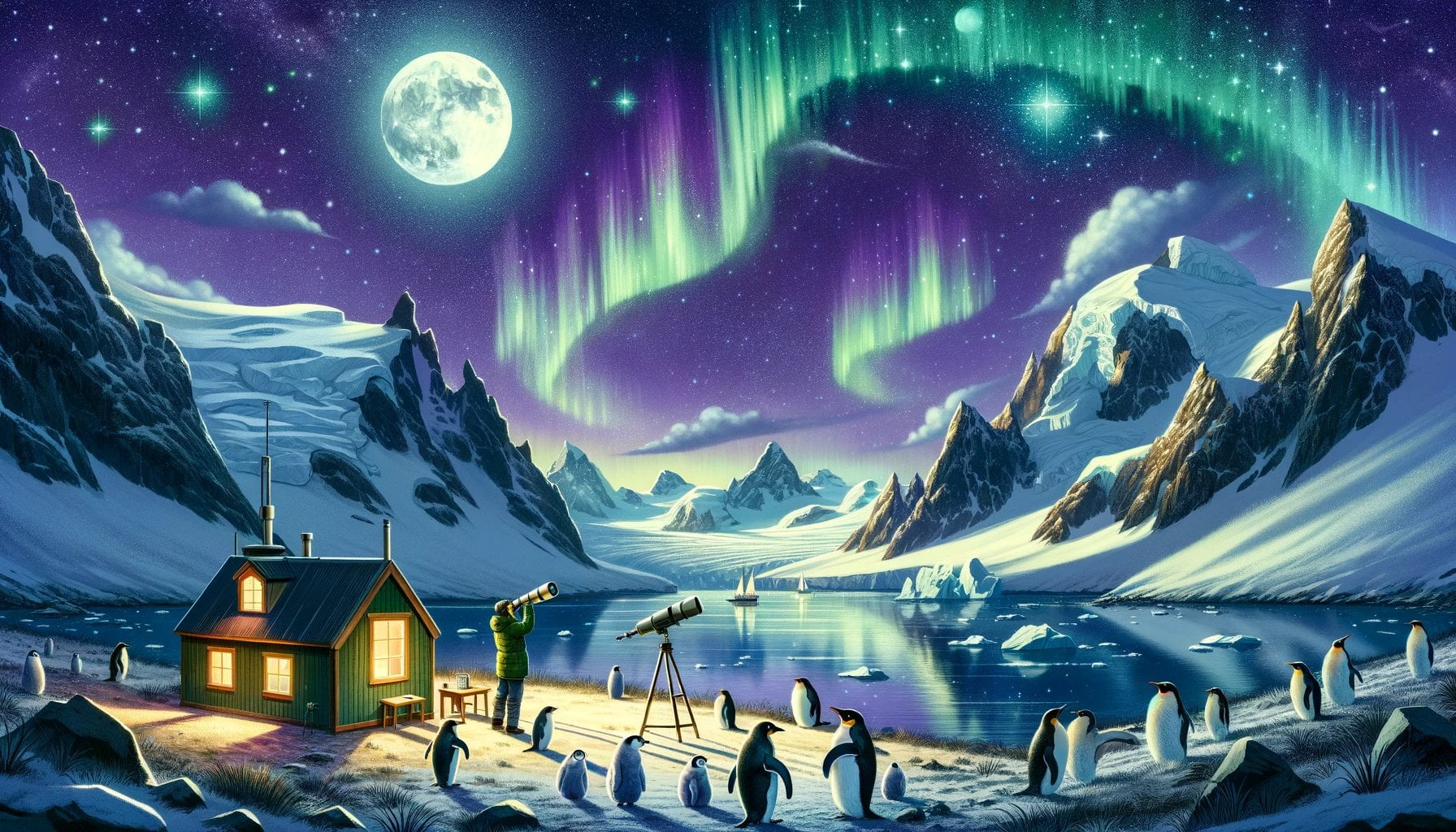
FAQ
Q1: What are three captivating facts about Antarctica?
A1: Three captivating facts about Antarctica include its extreme environmental conditions, with temperatures reaching as low as -89.2 degrees Celsius and winds of over 200 mph. It is also home to unique wildlife, such as the blue whale and Adelie penguin, and has no native trees, flowering plants, land-dwelling mammals, reptiles, or amphibians.
Q2: How much ice does the Antarctic Ice Sheet contain?
A2: The Antarctic Ice Sheet contains about 30 million cubic kilometers (7.2 million cubic miles) of ice, making it the Earth’s largest ice sheet. If it were to melt entirely, it has the potential to raise global sea levels by about 58 meters (190 feet).
Q3: How is the melting of the Antarctic ice sheet accelerating?
A3: The melting of the Antarctic ice sheet is accelerating due to climate change. Weakening of floating ice shelves and thinning and calving of coastal glaciers have resulted in a net loss of 12 trillion tons of ice since 1997, which is double previous estimates.
Q4: What is the significance of Antarctica for humanity?
A4: Antarctica plays a crucial role in regulating the global climate and ocean currents, making it significant for humanity. Scientists conduct research in Antarctica to gain critical insights into the ocean, ice, and global climate, which has implications for sea-level rise and climate change.
Q5: What is the importance of accurate predictions of ice mass loss from Antarctica?
A5: Accurate predictions of ice mass loss from Antarctica are crucial for projecting sea-level rise. Climate change exacerbates ice mass loss by increasing basal thermal conditions, making it essential to understand and model the melting of Antarctic ice accurately.
- Discover Long Black Pepper: Flavor & Health Benefits - April 25, 2025
- Shocking Twists: The Grownup Review: Unreliable Narration - April 25, 2025
- A Quiet Place Book vs Movie: A Deep Dive - April 25, 2025
